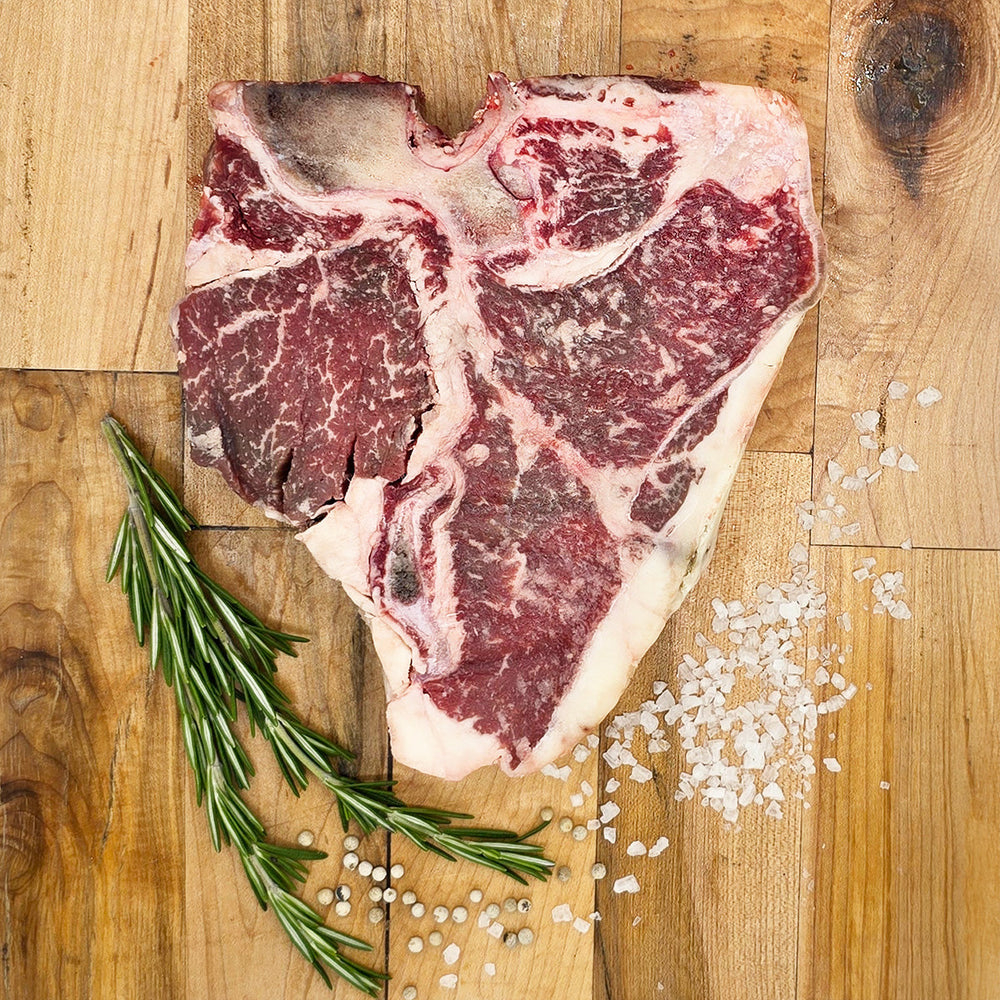
If you have ever tasted dry aged beef, you know it is unforgettable. It's delicious. And essentially, "beefier beef!"
The aging process concentrates flavor, brings out nutty and buttery notes, and creates tenderness you cannot fake. Which leads to a common question I've gotten, which is: is it safe to eat dry aged beef raw?
The Short Answer
Technically yes, you can eat dry aged beef raw, but it is not recommended. Dry aging does not make beef unsafe, but it also does not make it suitable for raw dishes like steak tartare without extra steps. The safest and best way to enjoy dry aged beef is by cooking it.
Why Dry Aging Is Different
Dry aging is done in carefully controlled coolers with strict temperature, airflow, and humidity. Over time, the outer layer of the beef forms a dark crust that protects the meat but is trimmed away before cutting steaks. Inside, the beef becomes richer and more tender. Like I said, "beefier beef!"
That outer crust is where bacteria can live. When you cook a steak, like the porterhouse pictured, the heat eliminates any risk. If you skip cooking, you skip that safety step.
When Raw Beef Is Eaten
Classic dishes like steak tartare, beef carpaccio, or yukhoe in Korean cuisine are built around raw beef. Those recipes rely on ultra fresh cuts that are trimmed with precision and sometimes frozen first.
Restaurants that prepare raw beef have strict safety protocols. Dry aged beef is not handled with that goal in mind, so it does not fit into that same category.
The Safe Way To Enjoy It
For dry aged beef, the real magic happens on the grill or in the pan. Cooking highlights the bold flavors, unlocks the tender texture, and keeps you safe. If you are curious about raw beef, order it at a reputable restaurant where it is prepared for that purpose.
All-in-All
Dry aged beef is a treasure when cooked.
That is where the flavor blossoms and the safety concerns vanish. Save your raw beef experiments for specialty dishes made with beef that has been sourced and prepared specifically for that purpose.
Frequently Asked Questions
Is dry aged beef safe to eat raw?
It is possible but not recommended. The dry aging process does not prepare beef for raw consumption the way tartare or carpaccio cuts are handled.
Is dry aged beef the same as sushi grade beef?
No. Sushi grade refers to seafood that has been frozen and handled to reduce parasites. Dry aged beef is aged for flavor, not for raw safety.
Can I use dry aged beef for steak tartare?
Not without extra caution. Unless it is cut, trimmed, and handled by a professional with food safety protocols in place, it is better to stick with fresh, properly prepared beef.
What is the best way to enjoy dry aged beef?
Cook it. High heat searing, grilling, or roasting will bring out the nutty flavor and ensure food safety.
In the end, dry aged beef is at its best when it hits heat. The aging process gives you flavor that deserves to be seared, grilled, or roasted.
Cook it, savor it, and let me know how it goes the next time you try a beautiful dry aged steak at home!
XOXO,
Louisa



Dejar un comentario
Ver artículo completo
Thawing Big Cuts: How Much Time to Pull from the Freezer
Ever wondered how long it really takes a ham or prime rib to thaw in the fridge? We’ve all been there, staring at a frozen roast two days before dinner. Here’s your guide to safe, slow thawing, including how many days to allow for bone-in versus boneless cuts and when to pull from the freezer so your meal goes off without a hitch.
Plus, a reminder why we only ship frozen, because that’s what keeps your meat safest and freshest.
Ver artículo completo
What’s the Difference Between A1 and A2 Milk
Ever wonder if Creamery Creek milk is A1 or A2? The truth is, it’s a natural blend. Our Holstein herd includes both A1A2 and A2A2 cows, and while we track it through genomic testing, we don’t separate the milk. Here’s what that means and why we care about it.
Ver artículo completo
Behind the Scenes: How Your Order Ships from Our Farm
Ever wonder what happens after you click “Place Order”? Take a peek behind the scenes to see how your Creamery Creek box is packed, shipped, and delivered straight from our family farm with care and attention in every step.
Ver artículo completo